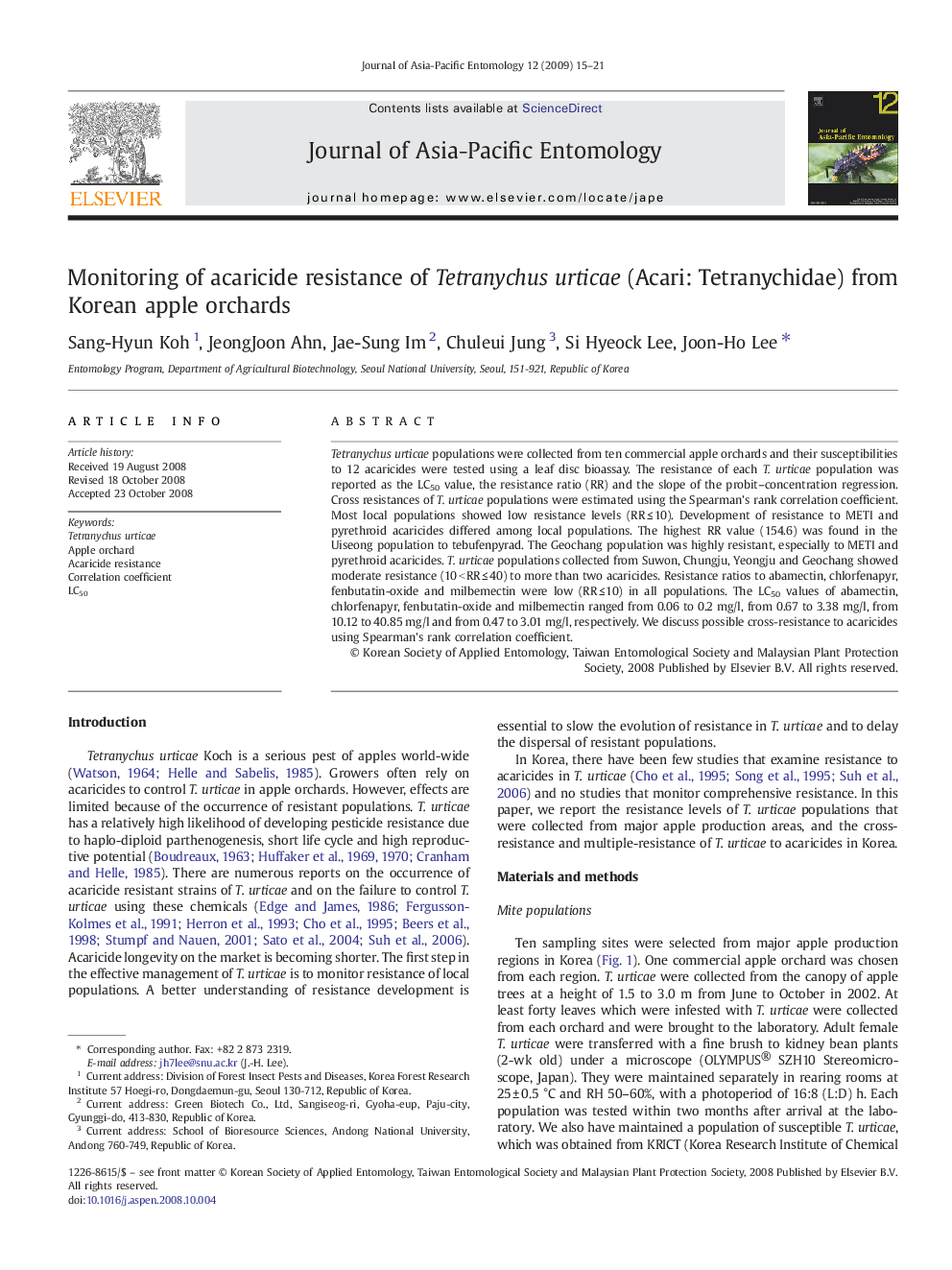| Article ID | Journal | Published Year | Pages | File Type |
|---|---|---|---|---|
| 4524984 | Journal of Asia-Pacific Entomology | 2009 | 7 Pages |
Tetranychus urticae populations were collected from ten commercial apple orchards and their susceptibilities to 12 acaricides were tested using a leaf disc bioassay. The resistance of each T. urticae population was reported as the LC50 value, the resistance ratio (RR) and the slope of the probit–concentration regression. Cross resistances of T. urticae populations were estimated using the Spearman's rank correlation coefficient. Most local populations showed low resistance levels (RR ≤ 10). Development of resistance to METI and pyrethroid acaricides differed among local populations. The highest RR value (154.6) was found in the Uiseong population to tebufenpyrad. The Geochang population was highly resistant, especially to METI and pyrethroid acaricides. T. urticae populations collected from Suwon, Chungju, Yeongju and Geochang showed moderate resistance (10 < RR ≤ 40) to more than two acaricides. Resistance ratios to abamectin, chlorfenapyr, fenbutatin-oxide and milbemectin were low (RR ≤ 10) in all populations. The LC50 values of abamectin, chlorfenapyr, fenbutatin-oxide and milbemectin ranged from 0.06 to 0.2 mg/l, from 0.67 to 3.38 mg/l, from 10.12 to 40.85 mg/l and from 0.47 to 3.01 mg/l, respectively. We discuss possible cross-resistance to acaricides using Spearman's rank correlation coefficient.
